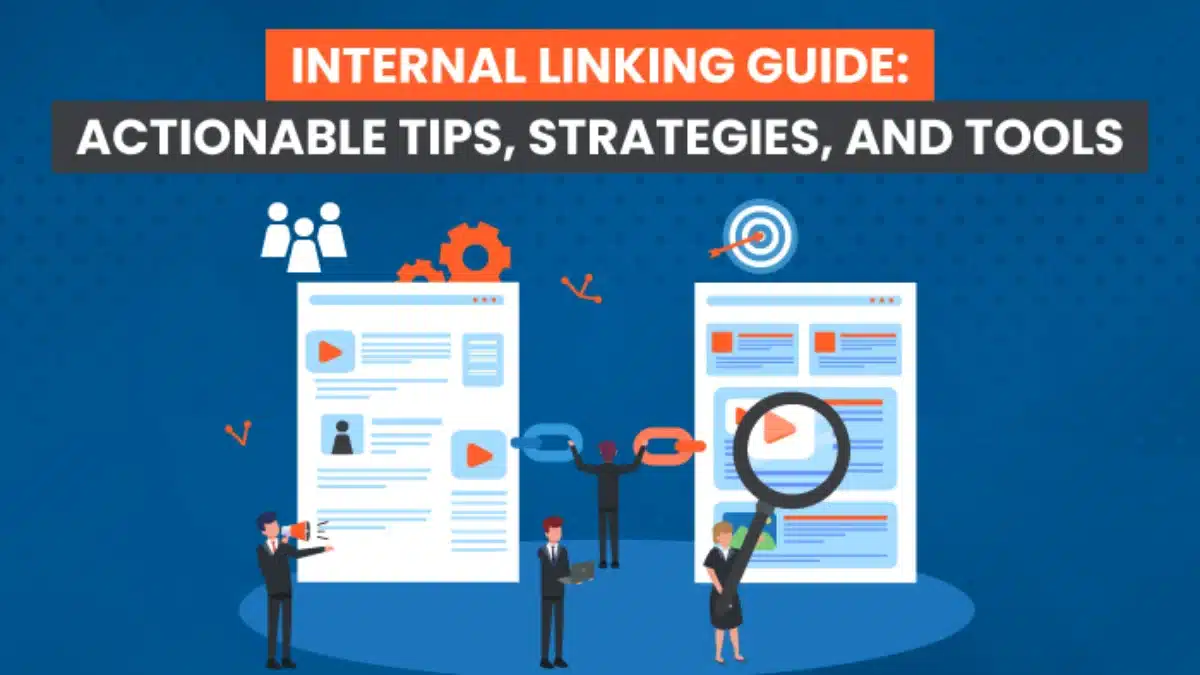Importance of Internal linking is a critical aspect of search engine optimization (SEO) that can significantly impact your website’s performance in search rankings.
Here are the five key importance of internal linking for SEO, along with actionable tips, strategies, and tools to implement it effectively:
1. Enhanced Website Navigation and User Experience:
- Actionable Tips:
- Include clear and intuitive navigation menus on your website.
- Use contextual links within your content to guide users to related information.
- Implement breadcrumbs to help users understand their location within your website.
- Utilize footer links to provide additional navigation options.
- Strategies:
- Conduct a thorough content audit to identify opportunities for internal linking.
- Create a site structure that is logical and intuitive for users to navigate.
- Link to relevant and related pages within your content to enhance the user’s journey.
- Consider user behavior and feedback to optimize internal linking placements.
- Tools:
- Google Analytics: Track user behavior, including bounce rates and time on site, to assess the effectiveness of your internal linking strategy.
- Heatmap tools (e.g., Crazy Egg, Hotjar): Analyze user interactions and identify areas where internal links can be strategically placed for improved engagement.
2. Improved Organic Search Visibility:
- Actionable Tips:
- Utilize descriptive anchor text that contains relevant keywords for internal links.
- Link to important pages from high-ranking and authoritative pages on your website.
- Optimize meta titles and descriptions to encourage click-throughs from search engine results pages (SERPs).
- Implement an XML sitemap to ensure search engines can crawl and index your internal links.
- Strategies:
- Create pillar content pieces that cover broad topics and link to supporting articles or blog posts.
- Build topic clusters by interlinking related content to signal to search engines the depth and relevance of your content.
- Identify and optimize pages with high link authority to pass link equity to other important pages.
- Tools:
- SEMrush: Perform keyword research and identify opportunities for internal linking based on keyword relevance and search volume.
- Moz Link Explorer: Analyze the link profile of your website and identify authoritative pages for internal linking opportunities.
- Google Search Console: Monitor the indexing and crawling status of your internal links and identify any issues.
3. Keyword Optimization and Anchor Text:
- Actionable Tips:
- Incorporate targeted keywords naturally within the anchor text of your internal links.
- Use variations of anchor text to avoid over-optimization and maintain a natural link profile.
- Prioritize the use of descriptive anchor text that accurately represents the linked page’s content.
- Strategies:
- Conduct keyword research to identify relevant and high-value keywords to target in your internal links.
- Create content silos or thematic clusters by interlinking pages that focus on related topics.
- Avoid excessive keyword usage and ensure that anchor text flows naturally within the content.
- Tools:
- Ahrefs: Explore keyword opportunities, analyze competitors’ link profiles, and identify potential anchor text variations.
- Yoast SEO (WordPress plugin): Provides recommendations for optimizing on-page content, including internal linking suggestions and anchor text optimization.
4. Establishing Content Relationships and Context:
- Actionable Tips:
- Identify and link to relevant supporting content within your blog posts or articles.
- Use descriptive link labels that provide context and indicate the relationship between linked pages.
- Link back to pillar content from supporting articles to reinforce their importance.
- Strategies:
- Create a content marketing strategy that outlines the interlinking of related content pieces.
- Develop topic clusters by linking together content that covers different aspects of a broader topic.
- Ensure that internal links provide value to users by guiding them to additional relevant information.
- Tools:
- BuzzSumo: Discover popular and trending content in your industry to identify opportunities for internal linking and content relationships.
- CoSchedule Headline Analyzer: Craft compelling and descriptive anchor text for your internal links.
5. Best Practices for Effective Internal Linking:
- Actionable Tips:
- Regularly review and update your internal links to ensure they are not broken or leading to outdated content.
- Use a variety of link formats, such as text links, image links, and button links, to create visual interest and improve user experience.
- Balance the number of internal links on a page to avoid overwhelming users or diluting the link equity.
- Strategies:
- Perform regular audits of your website’s internal linking structure to identify areas for improvement.
- Develop an internal linking strategy that outlines the goals, target pages, and anchor text for each link.
- Continuously monitor the performance of your internal links and make adjustments based on user behavior and SEO metrics.
- Tools:
- Screaming Frog SEO Spider: Crawl your website to identify broken links, analyze link structure, and ensure proper internal linking.
- LinkWhisper (WordPress plugin): Provides suggestions for internal links within your content based on keyword relevance and contextual analysis.
Internal linking is a powerful SEO strategy that enhances website navigation, improves user experience, and boosts organic search visibility. By following the actionable tips, implementing effective strategies, and utilizing the recommended tools, you can optimize your internal linking efforts to drive more traffic to your website, increase user engagement, and improve your search engine rankings.
Remember to regularly monitor and adjust your internal linking strategy to ensure it aligns with your website’s goals and provides the best possible experience for your users.





